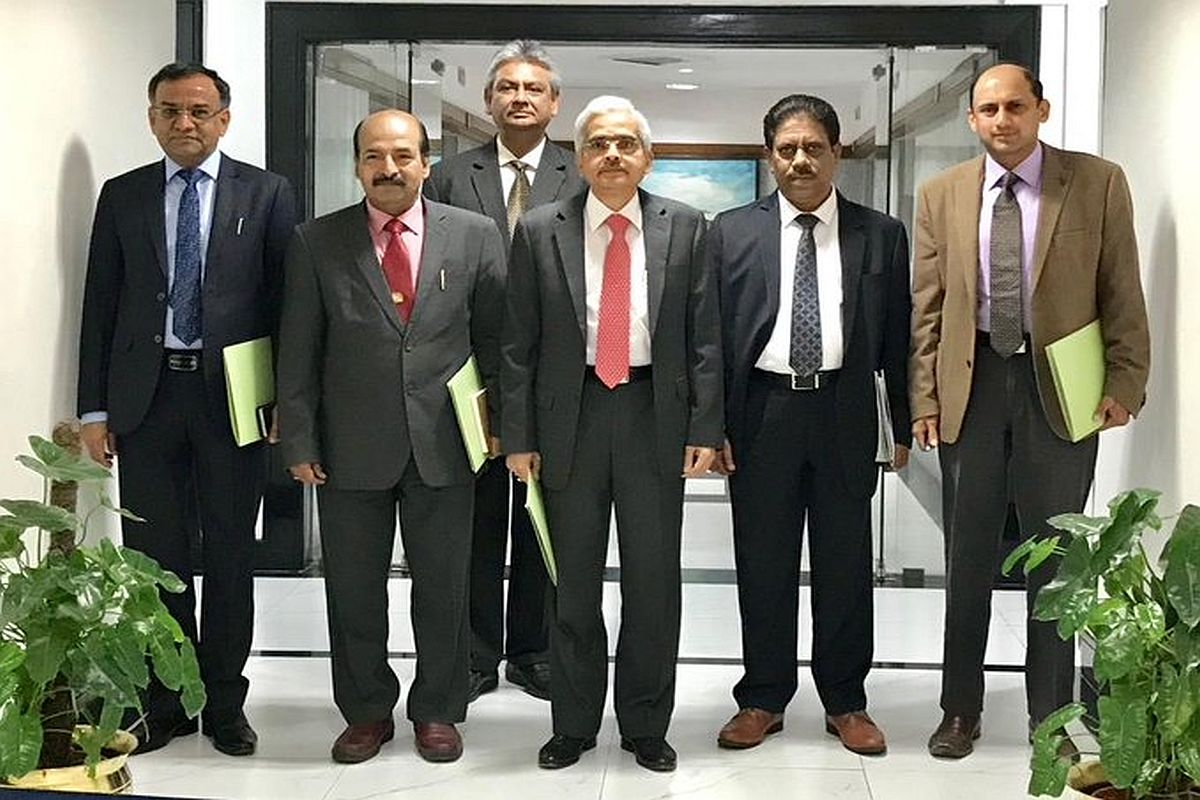India needs to expand at 7.8% to become a high-income country: World Bank
The World Bank in a report on Friday said India’s economy needs to expand at an average growth rate of 7.8 per cent over the coming decades to become a high-income country.
Meanwhile, the apex bank has projected the GDP growth for FY21, starting April 1, at 6 per cent while retaining the estimate for the current financial year at 5 per cent.

RBI Governor Shaktikanta Das with other central bank officials. (File Photo: IANS)
The Reserve bank of India (RBI) on Thursday kept the repo rate unchanged at 5.15 per cent in its last monetary policy for the current financial year.
RBI Governor Shaktikanta Das-led Monetary Policy Committee has decided to continue with an “accommodative” policy stance.
Advertisement
Inflation for December had touched 7.35 per cent raising the case for a no rate-cut.
Advertisement
This is the first policy announcement from RBI after the Union Budget 2020.
Meanwhile, amid rise in inflation and stress in the economy, the apex bank has projected the GDP growth for FY21, starting April 1, at 6 per cent while retaining the estimate for the current financial year at 5 per cent.
“Economic activity remains subdued and the few indicators that have moved up recently are yet to gain traction in a more broad-based manner. Given the evolving growth-inflation dynamics, the MPC felt it appropriate to maintain status quo,” the Monetary Policy Committee (MPC) said.
The six-member committee voted unanimously to hold rates, but also said that there is “policy space available for further action”.
In its previous monetary policy review in December, the RBI had decided for a status quo, leaving the key repo — the rate at which it lends to banks — at 5.15 per cent down from 6.1 per cent in October last.
Meanwhile, the reverse repo rate has been kept at the earlier 4.90 per cent.
The Reserve Bank of India (RBI) has also revised upward its CPI inflation target to 6.5 per cent for Q4 of current fiscal. It also set an inflation target of 5.4-5.0 per cent for the first half of 2020-21 and 3.2 per cent for the third quarter of 2020-21.
The RBI MPC considers CPI inflation for its monetary policy actions and inflation is expected to be within the comfort zone of the MPC in the next fiscal. However, fiscal deficit has not only breached the target but is budgeted at 3.5 per cent for 2020-21, including the reported off-budget liabilities, it works out to 4.3 per cent. For the current fiscal it is 3.8 per cent estimated. Government has used the ‘Escape’ clause to expand the fiscal deficit.
The breaching of the fiscal deficit target by 0.5 percentage points (from previous budget estimates) for both, the current fiscal, as well as the next, has also weighed in on the MPC decision.
This is the sixth and final bi-monthly monetary policy statement for 2019-20.
Between February and October 2019, the RBI had reduced repo rate by 135 basis points.
The government has estimated India’s gross domestic product (GDP) to be growing at a slower pace of 5 per cent in the current financial year on the back of various factors, domestic and global, including weakening consumer demand in the country.
In December, retail inflation also peaked to a five-year high of 7.3 per cent, mainly due to costlier vegetables, specifically onion and tomato.
The Economic Survey 2019-20 has projected the Indian economy to grow at around 6-6.5 per cent in the next financial year beginning April 2020.
The Indian rupee opened on a cautious note at 71.22 against the US dollar in opening trade on Thursday, registering a rise of 3 paise over its previous close as investors exercised caution ahead of the RBI’s monetary policy outcome.
Advertisement